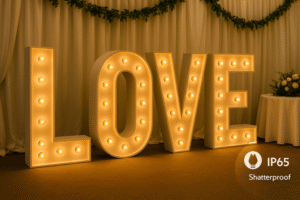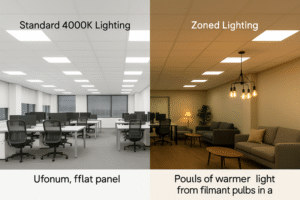You're tempted by low prices on LED candelabra bulbs. But you fear the hidden costs of poor quality, frequent replacements, and unhappy customers, which could damage your reputation.
No, a cheaper bulb is rarely worth the savings. True value comes from analyzing the total cost of ownership, not just the initial price. Quality components, a longer lifespan, and reliable performance provide a much better return on investment and protect your brand.
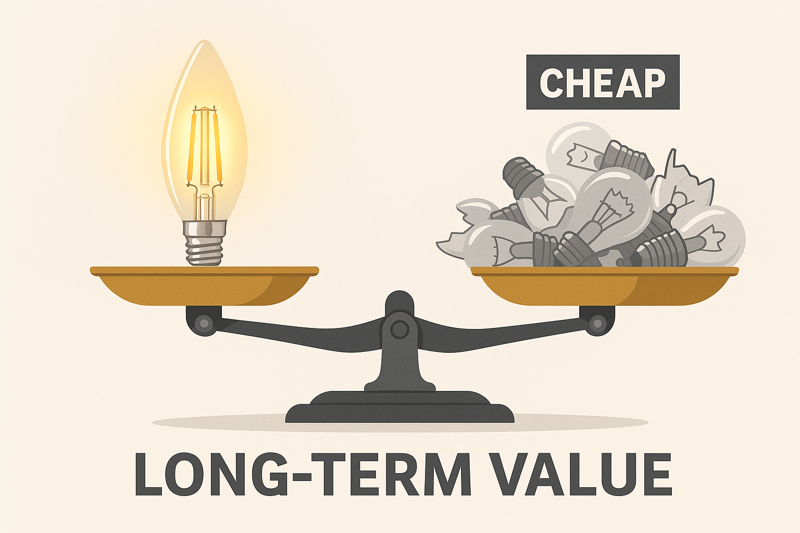
As a marketing manager at Omita Lighting, I talk to product managers and business owners like Jacky from the US every day. They are constantly navigating the difficult balance between cost and quality. It's easy to get drawn in by a supplier offering an unbelievably low price. But I've seen the aftermath of these decisions too many times: entire shipments that fail quality checks, flickering lights that ruin a customer's experience, and the frantic search for a new supplier. This is why a simple price comparison is not enough. You need a deeper value analysis to understand what you are actually paying for. It’s about making a smart investment in a product that performs reliably and a partner you can trust for years to come.
What Really Determines the Price of an LED Candelabra Bulb?
You see a huge range of prices for similar-looking bulbs, and it's confusing. You're not sure if a higher price means better quality or if you're just paying for a brand name.
The price of an LED candelabra bulb is determined by the quality of its core components: the LED chips, the driver electronics, and the glass and housing materials. Premium components cost more but deliver superior performance and reliability.
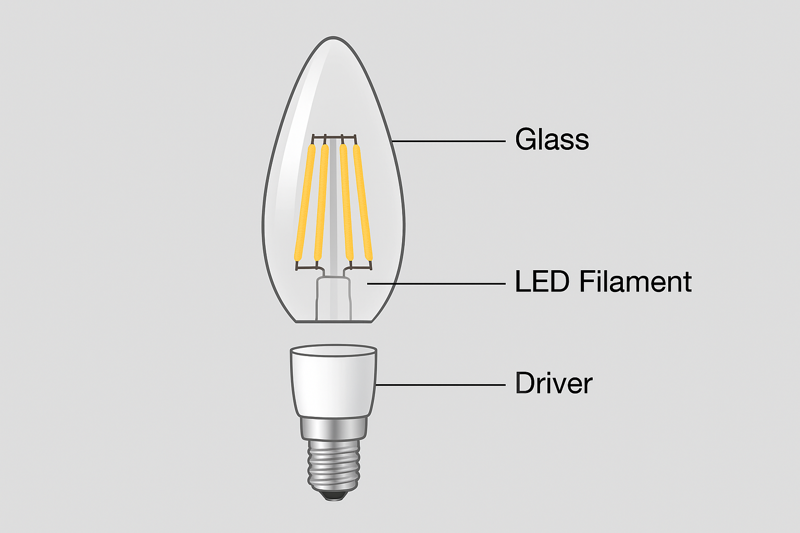
When you look at two candelabra bulbs, they might appear identical on the outside, but their internal components can be vastly different, and that's what dictates the price and performance. It's like comparing two cars that look the same but one has a high-performance engine and the other has a basic one. At Omita, where we control the entire manufacturing process, we focus on using quality components to ensure our bulbs offer real value. We know that cutting corners on these critical parts leads to premature failure and unhappy customers, which is bad for everyone's business. Understanding these components helps you see why a slightly higher price is often a wise investment.
The Heart of the Bulb: LED Chips
The LED chips are the light-producing engines. High-quality chips from reputable brands have better efficiency (more lumens per watt), a higher Color Rendering Index (CRI)1 so colors look natural, and consistent color temperature. Cheaper, unbranded chips often have poor color accuracy, are less efficient, and can have noticeable color differences from one bulb to the next. This is a critical factor for businesses where lighting quality directly impacts the customer experience, like in retail or hospitality.
The Brains of the Operation: The Driver
The driver is the internal electronic circuit2 that converts AC power from the wall into the DC power the LEDs need. A well-designed driver is essential for a long lifespan and stable performance. It prevents flickering and ensures smooth dimming. Low-cost bulbs often use very simple, low-quality drivers that are prone to overheating and failure. This is why so many cheap LED bulbs flicker or die long before their rated lifespan. Investing in a bulb with a quality driver is investing in reliability.
The Body and Soul: Glass and Thermal Management
The materials used for the bulb's body and glass also matter. High-quality glass provides better clarity and durability. More importantly, the internal design must effectively manage heat. LEDs generate heat, and if it's not drawn away from the chips, it will drastically shorten their lifespan. A well-engineered bulb has proper thermal management3, often using metal heat sinks or special conductive materials. A cheap bulb typically has poor heat dissipation, which is a primary cause of early failure.
| Component | High-Quality (Higher Price) | Low-Quality (Lower Price) |
|---|---|---|
| LED Chips | High CRI (>90), consistent color, high efficiency | Low CRI (<80), color variation, low efficiency |
| Driver | Smooth dimming, no flicker, long lifespan | Flickering, incompatible with dimmers, early failure |
| Materials | Quality glass, effective heat sink | Thin glass, poor thermal management |
| Result | Reliable Performance, Long Lifespan | Frequent Failures, Poor Light Quality |
How Does a Low-Price Bulb Compare to a Quality Bulb in the Long Run?
You're trying to manage a tight budget, and the low initial cost of some bulbs is very tempting. But you're worried about the long-term costs of maintenance and replacement if they fail early.
A low-price bulb has a much higher Total Cost of Ownership (TCO). While its initial cost is low, frequent failures lead to high replacement and labor costs that far exceed the price of a durable, high-quality bulb.
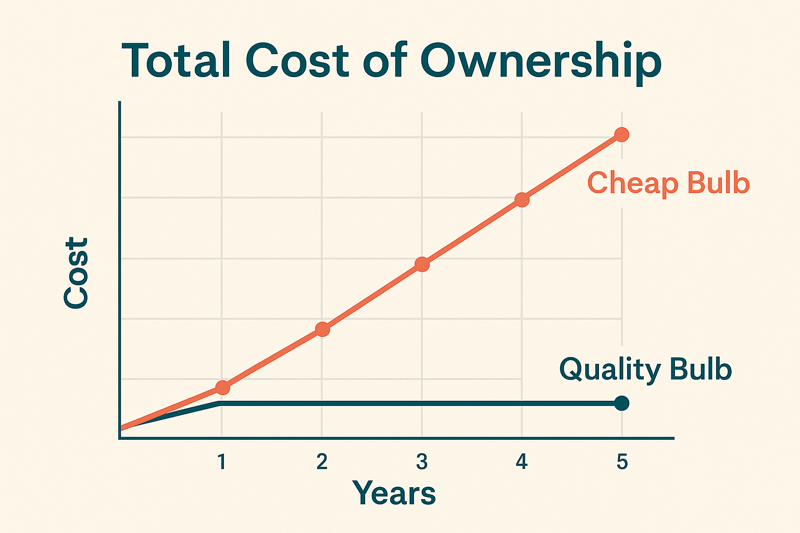
The initial price tag is just the tip of the iceberg. What truly matters for any business is the Total Cost of Ownership. This includes the purchase price plus all the associated costs over the product's entire life. I've worked with many clients who initially chose a cheaper supplier only to come to us later, frustrated by the constant cycle of buying and replacing failed bulbs. Their maintenance teams were spending more time on ladders changing bulbs than on other important tasks. This is a classic example of a short-term saving leading to a long-term expense. We build our products with a focus on longevity and reliability to ensure our partners enjoy the lowest possible TCO, saving them money, time, and headaches.
The Math of Replacements
Let's do a simple calculation. Imagine you need to light a hotel lobby with 100 candelabra bulbs.
- Option A (Low-Price): $1.50 per bulb. Rated for 5,000 hours, but they start failing after one year.
- Option B (Quality): $3.50 per bulb from Omita Lighting. Rated for 20,000 hours, lasting for five years under the same use.
Over five years, you would have to buy the cheap bulbs five times. That's a total product cost of $750 ($1.50 x 100 bulbs x 5). For the quality bulbs, your total product cost is just $350 ($3.50 x 100 bulbs). The "cheaper" option actually cost you more than double in product alone.
The Overlooked Cost of Labor
Now, let's factor in the labor to replace those bulbs. If it takes a maintenance worker two hours to replace all 100 bulbs, and their time is valued at $25/hour, that's $50 per replacement cycle. With Option A, you have four extra replacement cycles over five years. That's an additional $200 in labor costs that you completely avoid with the reliable, long-lasting bulbs from Option B. The true cost difference becomes even larger.
Energy Efficiency Savings
High-quality LED chips are not just more reliable; they are also more efficient. A quality bulb might use 3.5 watts to produce the same brightness that a cheap bulb needs 4 watts for. While this seems like a small difference, when you multiply it by 100 bulbs running for 12 hours a day, the energy savings from the more efficient bulbs add up to a significant amount over their lifespan, further lowering their total cost.
| Cost Factor (5 Years, 100 Bulbs) | Option A: Low-Price Bulb4 | Option B: Quality Bulb5 |
|---|---|---|
| Initial Purchase Price | $150 | $350 |
| Replacement Purchases | $600 (4 replacements) | $0 |
| Labor for Replacements | $200 (4 replacements) | $0 |
| Total Cost of Ownership | $950+ | $350 |
Why Does Bulb Quality Directly Impact Your Business's Reputation?
You've found a bulb that works okay, but the light is a bit harsh, and the colors look off. You wonder if your customers even notice or if this is something that could affect your sales.
Bulb quality is a crucial part of your customer experience. Poor lighting can make products look unappealing, create an uncomfortable atmosphere, and make your business seem unprofessional, directly damaging your brand and reputation.
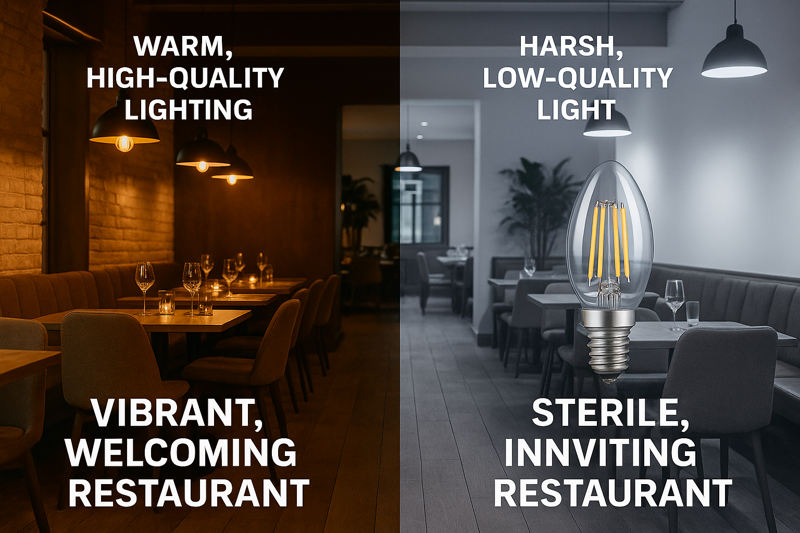
Lighting is one of the most powerful and subconscious communicators in any commercial space. It sets the mood, guides attention, and sends a message about your brand's commitment to quality. As a manufacturer exporting to over 85 countries, we've seen firsthand how our lighting solutions are used to build successful brands. A high-end restaurant would never use cheap, flickering bulbs, because they know the ambiance is just as important as the food. Similarly, a retail store relies on high-CRI lighting to make their merchandise look vibrant and true-to-life. Choosing a low-quality bulb is not just a maintenance issue; it's a branding decision. It tells your customers that you are willing to cut corners, which can erode trust and loyalty over time.
First Impressions and Atmosphere
When a customer walks into your business, the lighting is one of the first things they experience. Warm, inviting light with excellent color rendering creates a welcoming and comfortable atmosphere, encouraging them to stay longer and engage with your products or services. Harsh, flickering, or inconsistent light does the opposite. It can create a sense of unease and cheapness, causing customers to perceive your entire establishment in a negative way before they even look at a single product.
Product Presentation and Sales
For any retail business, lighting is a powerful sales tool. A high Color Rendering Index (CRI)6 is essential for making products look their best. A bulb with a CRI of 90+ will render colors accurately, making clothing look vibrant, food look fresh, and jewelry sparkle. A low-CRI bulb, however, can make colors look dull, washed out, or even change their hue entirely. This can lead to customer dissatisfaction and an increase in product returns when an item looks different outside the store.
The Signal of Professionalism
Consistent, reliable lighting is a sign of a well-run, professional operation. When customers see flickering bulbs or noticeable color differences between fixtures, it can give the impression of poor maintenance and a lack of attention to detail. This can subtly undermine their confidence in your brand. By investing in high-quality lighting7 from a reliable supplier, you are sending a clear message that you care about every detail of your customers' experience, which reinforces the overall quality and trustworthiness of your brand.
Conclusion
A lower price rarely means better value. To truly save money and protect your brand, you must analyze the total cost of ownership, focusing on quality components, reliability, and performance.
Understanding CRI helps you choose lighting that enhances color accuracy, crucial for businesses aiming to create the right ambiance. ↩
Learn about the role of internal circuits in LED drivers to ensure optimal performance and longevity of your lighting solutions. ↩
Explore effective thermal management techniques to extend the lifespan of your LED bulbs and improve their performance. ↩
Understand the hidden costs associated with low-price bulbs, including replacements and labor, to avoid poor investment. ↩
Explore the advantages of quality bulbs, including longevity and energy efficiency, to make informed lighting decisions. ↩
Understanding CRI can help you choose the right lighting for your business, enhancing product presentation and customer satisfaction. ↩
Exploring this topic reveals how investing in quality lighting can elevate your brand's image and improve customer engagement. ↩






